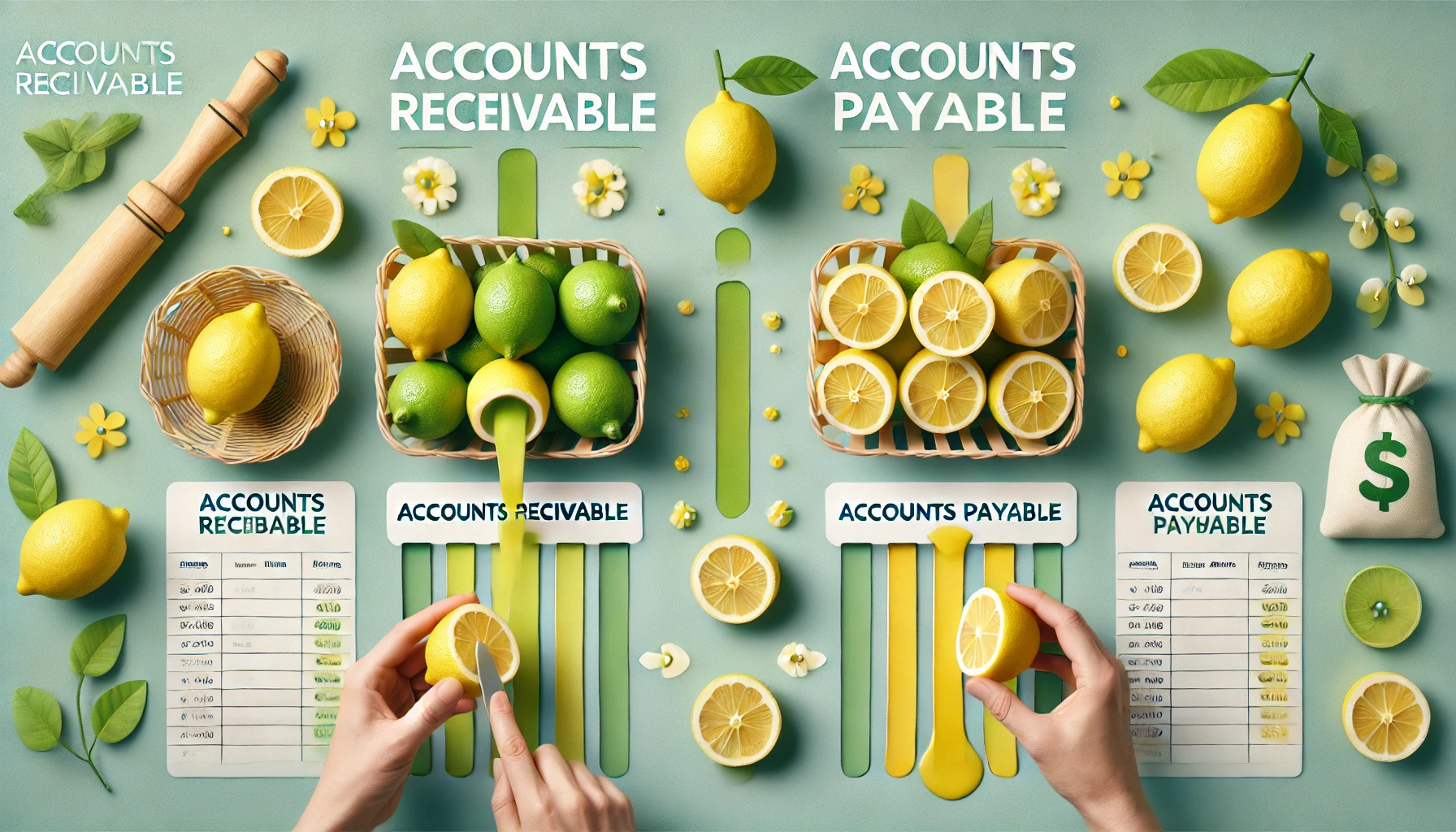Accounts Receivable and Accounts Payable Articulated with a Glass of Lemonade

What does Accounts Payable and Accounts Receivable mean?
Accounts Receivable represents the sum of money customers owe a company, which will be paid in the future. For instance, when you purchase a new smartphone on credit and make monthly payments, this becomes an account receivable for the company selling the phone.
On the other hand, Accounts Payable refers to the amount a company owes to other businesses, to be paid at a later date. Consider a small clothing boutique that buys inventory from a specific brand. The money owed to that brand or supplier constitutes the boutique’s accounts payable, which they are obligated to settle in the future.
If a company manages these accounts appropriately, it will add to its long-term profit, financial health, low investment risk, working capital, profitability, and cash conversion rate. What if you look at a company’s Accounts Receivable and Accounts Payable, and it doesn’t look good? That can be a problem!
The Accounts Receivable/Payable of a Lemonade Stand
Perhaps you’re still wondering what Accounts Receivable and Accounts Payable mean in simpler terms. Let’s explore these concepts through the growing success of Rebecca’s lemonade stand.
Rebecca has established her business in a familiar community where she knows her customers well. She allows them to purchase lemonade on credit. On average, Rebecca sells 30 cups of lemonade monthly on credit, equivalent to $90 in revenue. When customers buy a cup of lemonade on credit, they have a month to pay it back. The $90 owed to Rebecca is the Accounts Receivable for the lemonade stand.
To make the best lemonade, Rebecca purchases her lemons monthly from a local supplier for $100. The supplier provides an invoice requiring payment within 30 days. Rebecca is now obligated to pay the supplier within this specified period. The $100 owed to the supplier is the Accounts Payable for the lemonade stand.
To summarize: Accounts Receivable = $90 Accounts Payable = $100
As Rebecca’s lemonade stand grows, she will likely purchase more materials from suppliers and have more customers using credit. To manage the financial aspects of her business correctly, Rebecca needs to carefully track and understand both the incoming money from Accounts Receivable and her future payment obligations in Accounts Payable. This careful management of cash flow is crucial for the long-term success and sustainability of her growing business.
Accounts Receivable/Payable Out in the Wild
If you’re grasping the concept but want to see it applied on a larger scale, let’s examine a real company: Starbucks. As one of the world’s largest coffee chains, Starbucks has become iconic for fueling people’s caffeine habits across the globe. They’re also pioneers in digital transactions within the coffee industry.
Imagine a customer walks into Starbucks and orders a $5 drink using the mobile app, opting to pay later from their stored account value. Starbucks records this as $5 in Accounts Receivable because the customer owes Starbucks for the coffee until the app payment is processed.
Now, multiply this scenario by 20,000 transactions a week, and Starbucks would have $100,000 in Accounts Receivable. Extrapolate that to a month with four weeks, and you’re looking at $400,000 in monthly Accounts Receivable.
Given Starbucks’ massive customer base, they naturally require numerous suppliers. Let’s say they have an agreement to purchase $100,000 worth of coffee beans monthly from just one supplier. If they have three such suppliers in Guatemala alone (known for its excellent coffee), Starbucks would accrue $300,000 in Accounts Payable by month’s end.
While these figures are hypothetical, consider some real numbers: Starbucks purchases approximately 3% of the world’s coffee, sourcing from 30 countries and 400,000 farmers, totaling about 800 million pounds of coffee annually. With such staggering figures, you can imagine the scale of Accounts Receivable and Accounts Payable for this global coffee powerhouse.
.
This example illustrates how the principles of Accounts Receivable and Accounts Payable apply not just to small businesses like Rebecca’s lemonade stand, but also to multinational corporations operating on a global scale. The fundamental concepts remain the same, but the numbers grow exponentially, highlighting the critical importance of effective financial management in businesses of all sizes.
Why Equities Lab
Here at Equities Lab we strive to educate and demonstrate why concepts such as accounts receivable and accounts payable should impact how you evaluate the stock market. Using the software at Equities Lab, you can easily compare accounts receivable from 1 quarter ago to the accounts receivable from 2 quarters ago, and the same with accounts payable. there is more to learn about how you can evaluate a company’s performance and what the outliers of AR and AP mean. If a company can wisely handle its accounts and demonstrate growth, that’s good news! But the moment there are mishandlings with AR and AP, you’ll be educated enough to spot it. With that information and a variety of formulas, you’ll be ready to find growing companies (and maybe a few that you want to avoid). Keep up with our content to see examples of how Equities Lab evaluates AR and AP.